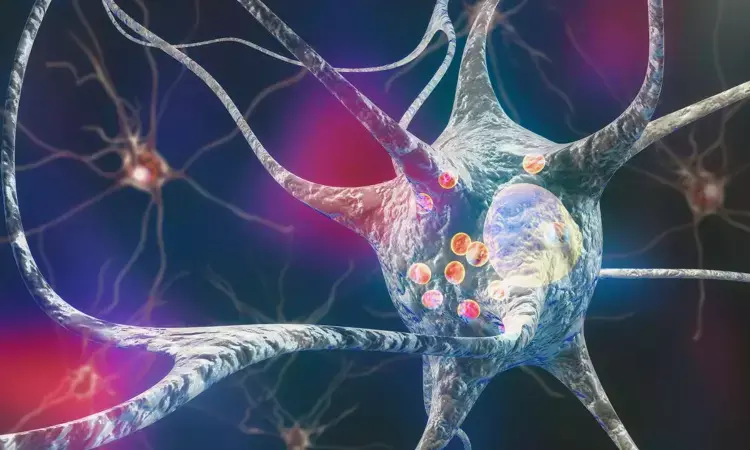- Home
- Medical news & Guidelines
- Anesthesiology
- Cardiology and CTVS
- Critical Care
- Dentistry
- Dermatology
- Diabetes and Endocrinology
- ENT
- Gastroenterology
- Medicine
- Nephrology
- Neurology
- Obstretics-Gynaecology
- Oncology
- Ophthalmology
- Orthopaedics
- Pediatrics-Neonatology
- Psychiatry
- Pulmonology
- Radiology
- Surgery
- Urology
- Laboratory Medicine
- Diet
- Nursing
- Paramedical
- Physiotherapy
- Health news
- Fact Check
- Bone Health Fact Check
- Brain Health Fact Check
- Cancer Related Fact Check
- Child Care Fact Check
- Dental and oral health fact check
- Diabetes and metabolic health fact check
- Diet and Nutrition Fact Check
- Eye and ENT Care Fact Check
- Fitness fact check
- Gut health fact check
- Heart health fact check
- Kidney health fact check
- Medical education fact check
- Men's health fact check
- Respiratory fact check
- Skin and hair care fact check
- Vaccine and Immunization fact check
- Women's health fact check
- AYUSH
- State News
- Andaman and Nicobar Islands
- Andhra Pradesh
- Arunachal Pradesh
- Assam
- Bihar
- Chandigarh
- Chattisgarh
- Dadra and Nagar Haveli
- Daman and Diu
- Delhi
- Goa
- Gujarat
- Haryana
- Himachal Pradesh
- Jammu & Kashmir
- Jharkhand
- Karnataka
- Kerala
- Ladakh
- Lakshadweep
- Madhya Pradesh
- Maharashtra
- Manipur
- Meghalaya
- Mizoram
- Nagaland
- Odisha
- Puducherry
- Punjab
- Rajasthan
- Sikkim
- Tamil Nadu
- Telangana
- Tripura
- Uttar Pradesh
- Uttrakhand
- West Bengal
- Medical Education
- Industry
PET imaging links brain inflammation to speech disorder and Parkinson-like syndrome: Study

A novel PET imaging approach has revealed distinct patterns of brain inflammation in patients with progressive apraxia of speech (PAOS), a rare neurodegenerative disorder that affects speech planning. These findings provide new insight into how neuroinflammation and tau pathology may drive disease progression in PAOS, opening potential avenues for earlier diagnosis and targeted treatments. This research was presented at the Society of Nuclear Medicine and Molecular Imaging 2025 Annual Meeting.
PAOS is a neurodegenerative disorder that impairs the brain’s ability to plan and coordinate speech. It is marked by a slow speaking rate, distorted sounds, and effortful facial movements during speech. Patients with PAOS are likely to have Parkinson-plus syndrome in the later stages, meeting criteria for progressive supranuclear palsy or corticobasal syndrome, and typically have a 4-repeat tauopathy at autopsy.
“Although previous neuroimaging studies have shown significant brain atrophy and tau buildup in the premotor cortex and subcortical regions of PAOS patients, the spatial patterns of neuroinflammation-and how they relate to Parkinson-plus syndromes and tau accumulation-remain poorly understood,” said Ryota Satoh, assistant professor at the Mayo Clinic in Rochester, Minnesota. “Our study aimed to map the spatial patterns of neuroinflammation in PAOS-with and without Parkinson-plus features-and to explore how inflammation relates to tau deposition.”
The study included 25 PAOS patients (13 with Parkinson-plus syndrome) and 30 healthy controls, all of whom underwent 11C-ER176 TSPO PET scans to measure brain inflammation and tau buildup. Researchers analyzed 84 brain regions to assess how inflammation and tau PET signals were related in each patient, using a standardized brain atlas for reference. They then compared these levels between patients and healthy controls and analyzed how inflammation and tau were related across different brain regions.
11C-ER176 TSPO PET scans revealed that patients with PAOS had more brain inflammation than healthy controls, especially in areas of the brain that control movement and speech, like the premotor cortex, frontal lobes, basal ganglia, and midbrain. Patients with Parkinson-plus syndrome had broader uptake patterns and higher correlations than patients without the syndrome, suggesting that severe neuroinflammation is associated with the presence of Parkinson-plus syndrome.
“These results help contribute to our understanding of the neuroinflammatory process in PAOS and provide potential utility as a disease biomarker,” stated Satoh. “We believe that our findings could have a positive impact on research and development of neuroinflammatory PET techniques.”
Reference:
Ryota Satoh, Rene Utianski, Joseph Duffy, Heather Clark, Neuroinflammatory [11C]ER176 TSPO PET Profile with Colocalized Tau Uptake in Progressive Apraxia of Speech,Journal of Nuclear Medicine.
Dr Kamal Kant Kohli-MBBS, DTCD- a chest specialist with more than 30 years of practice and a flair for writing clinical articles, Dr Kamal Kant Kohli joined Medical Dialogues as a Chief Editor of Medical News. Besides writing articles, as an editor, he proofreads and verifies all the medical content published on Medical Dialogues including those coming from journals, studies,medical conferences,guidelines etc. Email: drkohli@medicaldialogues.in. Contact no. 011-43720751


